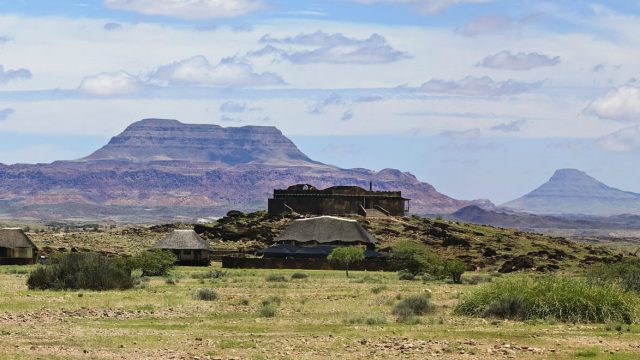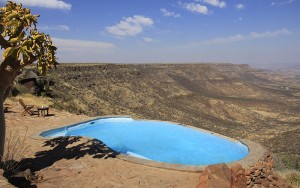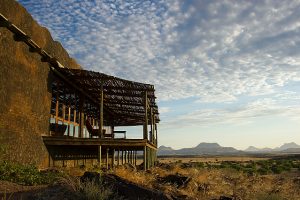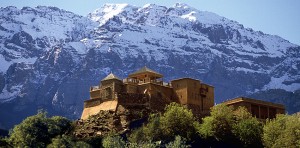An increasing number of Africa’s safari and wilderness lodges are run by locals, and place high value on environmental preservation and giving back to the communities in which they operate. Here are eight of the best.
Campi Ya Kanzi, Kenya
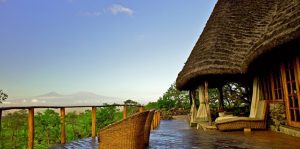
Courtesy of The Long Run
Set in the 400-sq mile Kuku group ranch in Kenya’s Chyulu Hills, just next to Amboseli National Park and bordering Tsavo West, is the award wining eco-luxe Campi ya Kanzi. As well as offering top-class Big Five wildlife viewing, this community-run project (almost all the staff are Maasai) helps preserve the local people’s cultural heritage, promoting interactions between visitors and the local Maasai community, including trust and village visits. It also makes as little impact on the environment as possible: water comes from rain cropping and hot water from solar panels.
Accommodation is in very comfortable safari tents or a private villa in the bush, a maximum of 26 guests in all.
Serra Cafema, Namibia
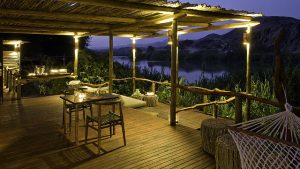
Courtesy of Kiwi Collection
Serra Cafema is a remote camp set along a river in the Hartmann Valley in Namibia’s extreme northwest. It’s built on land leased from the 300,000 hectare Marienfluss Conservancy, owned largely by the Himba people – some of the last semi-nomadic peoples on the planet.
Almost all the staff comes from the local Himba community, and the aim is for the lodge to be fully managed and run by local people in the near future.
Activities include drives and walks into the surrounding mountains or boat trips along the Kunene river – all done with as little impact on the surroundings as possible.
Il Ngwesi, Kenya

Courtesy of www.sawasawaafrica.com
Multi-award winning Il Ngwesi, a six-room lodge in Kenya’s outstanding northern frontier district, is owned and operated by the local Maasai community and all profits go to the 6000-strong Laikipiak Maasai community of Il N’gwesi.
Since this is a ‘Big Five’ area, the wildlife viewing is excellent,
and expert guides take you on game walks and drives, bird watching, and into the adjacent Lewa Wildlife Conservancy. Il Ngwesi group ranch is one of the few community projects in Kenya to support a Rhino Sanctuary.
Il Ngwesi Lodge is also eco-friendly. The six open-sided bandas provide beautiful views over the landscape, are made from thatch and local wood and use solar power for energy and water from a nearby spring.
Grootberg Lodge, Namibia
Set in the Klip River Valley some 1,700 meters above sea level, Grootberg’s twelve rooms offer some of the most breathtaking views in the country. It’s also the first Namibian lodge wholly owned by the local community – the 2,000-member Khoadi-Hoas Conservancy – and aims to be completely run by local people within the next decade.
Activities include visits to a Himba village, searching for rhino and desert elephant on foot and trips down the Klip River.
Local rock was used to construct Grootberg’s 16 chalets and a wood-burning stove provides hot water. Wildlife numbers in the conservancy continue to rise thanks to a compensation scheme set up by the lodge to minimise the impact of conflict between humans and wildlife.
Doro Nawas Camp, Namibia
Doro Nawas, one of Namibia’s first conservancy joint ventures, was set up when the local community approached Wilderness Safaris with an idea for a collaboration. Both the community and Wilderness Safaris own a 40 per cent stake in the camp, with the remaining 20 per cent in the hands of a Namibian black empowerment company.
A visit to Doro Nawas offers the opportunity to see how desert giraffe, elephant and other wildlife coexist with traditional farming activities. It’s also close to the ancient World Heritage listed rock engravings at Tywelfontein.
Leshiba Wilderness, South Africa

Courtesy of www.safarinow.com
Surrounded by stunning rock art sites and set within an area of outstanding natural beauty in the Soutpansberg, Limpopo, low-energy Leshiba was designed by local artist Noria Mabasa on the ruins of an old Venda village. The lodge is principally staffed by local people. It also hosts a farm, training local communities in organic farming and permaculture. The Leshiba Centre for Indigenous Knowledge works to promote and preserve local heritage and culture.
The lodge runs on solar power and other green sources, and traditional materials were used in its construction.
Bulungula Lodge, South Africa
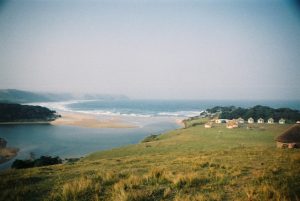
Photo courtesy of Bulungula
Remote Bulungula is a collection of 10 brightly painted rondavels perched on the edge of a cliff several hours drive from the nearest town, Mthata – there’s nothing but forest, fields and beautiful beaches for miles. It is run and co-owned by the local traditional Xhosa community of Nqileni village. Guests are actively encouraged to take part in village life, for example by chatting to the local people and learning a few words of Xhosa.
Bulungula is also carbon-neutral. It’s run on solar and wind power, has composting toilets, and offsets any CO2 emissions by the planting of slow-growing forest trees.
Kasbah du Toubkal, Morocco
Sitting on a hilltop in Morocco’s stunning Atlas Mountains, the Kasbah du Toubkal is run in partnership with the local Berber community, with five per cent of profits from guest accommodation going back to the villagers.
Village labourers used traditional building techniques and local materials to construct the lodge on the crumbling ruins of an old kasbah, with everything carried in by hand or mule.
Local Moroccan staff operates the lodge (the warmth of Berber hospitality here is legendary) and activities include hikes, camel excursions or simply enjoying the splendid views from the terrace. Almost all food is sourced locally and low energy light bulbs are used in the lodge.
More from AFKTravel:
5 Hotels And Lodges We Love Around Mount Kenya
Going Green On Vacation: The Best Eco-Friendly Hotels In Morocco
This article was originally published on May 7, 2015.
